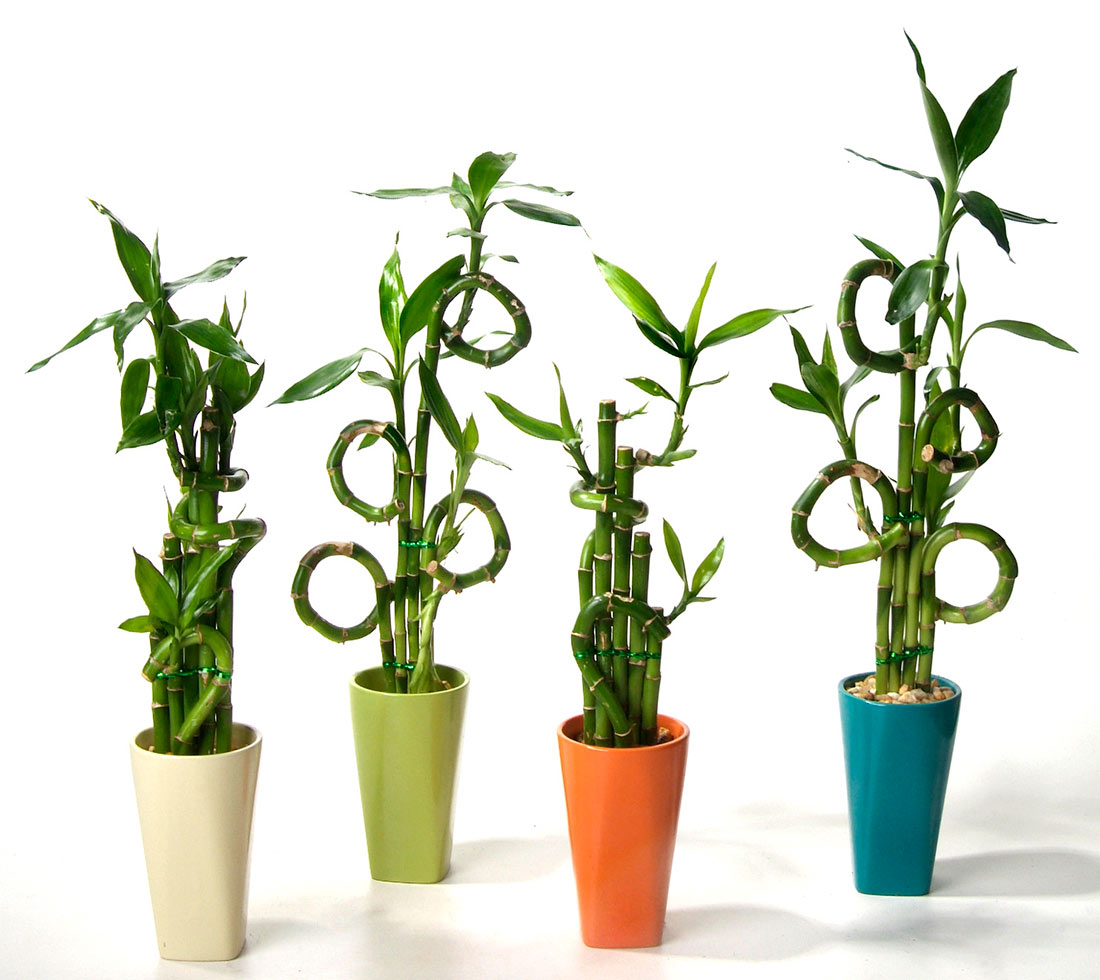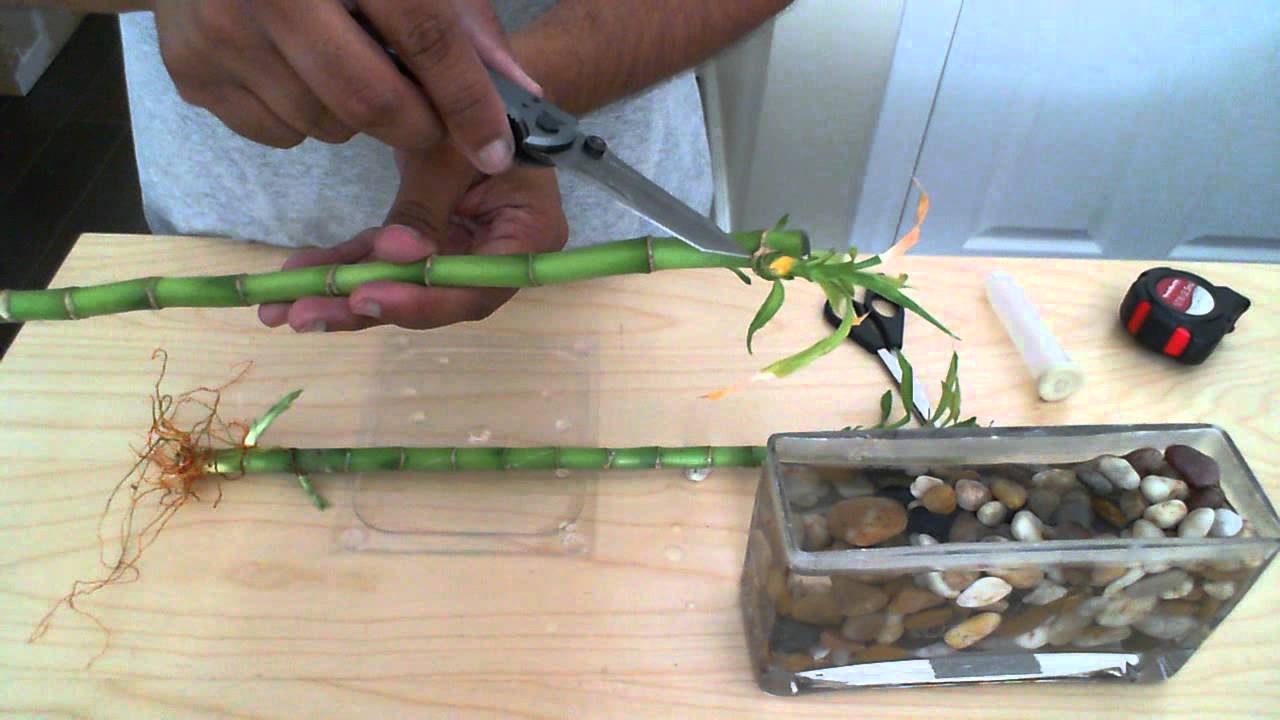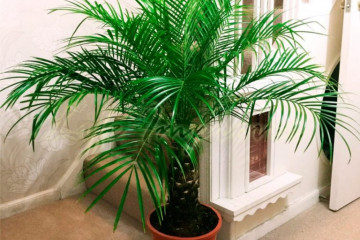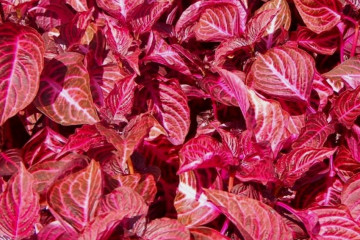Indoor bamboo - home care
Content:
Another name for this plant is Dracaena Sander. It can be easily grown at home or in offices. The popularity of the plant is due to its unpretentiousness.
In addition, it belongs to the category of evergreens and is a good decoration for a room.
About the history of appearance
Bamboo is widespread in southern latitudes. It can be found in tropical rainforests in Asia, Australia, Africa, and South America. In their historical homeland, the shrub is used as a medicine or building material. In some areas, it is actively consumed in food.
In Europe and Russia, the plant began to spread thanks to the practice of Feng Shui. It symbolizes all the elements at once:
- The tree (the plant itself);
- Water (used for watering);
- Land (pebbles in which it is recommended to grow it);
- Metal (a flower pot is installed on it);
- Fire (symbolized by a red ribbon tied to the stem).
Later, the plant began to be used when decorating rooms, since various decorative elements can be formed from its stems, and it can be used as a natural room divider.
Common varieties
Indoor plant lovers use the following classification of varieties (depending on growth):
- Low, with a trunk length of no more than 1 meter. The most common varieties are Tsuboi and Golden Goddess.
- Middle. In such varieties, the stem length reaches 3-3.5 meters. The most popular varieties are Shiroshima and Mexican Weeping Bamboo.
- High grades are very rarely found indoors, since their length can reach 6 meters, which means that they need special rooms with high ceilings. These varieties include "Monastic bamboo" and "Tropical black bamboo".
Bamboo Lucky
The stem of this variety has the shape of a spiral. The plant requires maintaining a special microclimate in terms of temperature and humidity in the room. It is not recommended to water it often. Typically, Lucky bamboo is used for interior decoration.
Bamboo golden lily
This variety got its name from the yellow-lemon or golden color of the stem. This feature makes it popular as an interior decoration. The variety is unpretentious in care, frost and wind-resistant, has an attractive appearance.
Bamboo Tsuboi
The features of this variety are:
- Fast growth;
- High survival rate after transplantation;
- Easily transfers a haircut;
- The leaves are green with bright white veins, which gives it an unusual appearance.
Bamboo Shiroshima
The country of origin for this variety is Japan. Its stems reach three meters in height. The beauty of the plant is given by large leaves of bright green color with white blotches. A feature of the variety is the need for bright lighting.
Mexican weeping bamboo
This variety belongs to the medium category. It grows in height by 3.5 meters. The stem is 2.5 to 4 centimeters thick.The color of the leaves is light green, they are long and narrow in shape. The country of origin is Mexico. Thanks to this, the plant can easily withstand the sun's rays.
Use for interior decoration
Home bamboo is widely used in interior decoration. Its presence in the interior allows you to create the atmosphere of the tropics. The use of stem reshaping tools allows you to create a variety of natural patterns.
The magical properties of indoor bamboo
In the East, this plant is believed to bring good luck. Thanks to this belief, it spread to Russia as well. In addition, many believe that indoor bamboo helps to restore energy balance and harmony in the house. The presence of this plant attracts money, happiness to the house and ensures peace and understanding in the family.
The houseplant bamboo plays an important role in feng shui practices. Placing it in the southeast corner of your office or home will ensure your business success. The effect of a flower can be increased by placing a three-toed toad next to it - a magical symbol of wealth in Feng Shui.
Caring for bamboo at home
Growing bamboo at home is easy. The technologies differ depending on whether it grows in water or soil. Some varieties are grown in both ways.
Temperature
The flower grows best at temperatures between 18 and 25 degrees Celsius. Easily tolerates the plant and hot weather. Most varieties have good frost resistance, but it is not recommended to overcool the plant.
Lighting
Diffused light is optimal for the plant. It is usually created with a curtain or curtain. Lack of light will lead to the flower turning yellow, its leaves will fall off, this will negatively affect its appearance and decorative properties.
Watering
It is recommended to water the plant only with settled rainwater. A lot of moisture is required in spring and summer. A plant with wide leaves must be watered 2 times a week, with narrow leaves at least once every two days. In winter and autumn, the frequency of watering should be significantly reduced (to once a week).
Spraying
Professional flower growers recommend spraying the plant 2 times a week. This allows the natural moisture level to be maintained. In addition, it is an element of hygiene. Rubbing and spraying the leaves protects the grass from pests.
Humidity
Most varieties are unpretentious in terms of indoor humidity. They grow equally well in both normal and low humidity conditions. Some varieties require the creation of a special microclimate in the room.
Growing bamboo in the ground
The plant can grow well in soil. Any mixture for growing bamboo is suitable; the plant does not impose any special requirements on the soil. He needs timely and good watering, as well as periodic feeding. Regular soil changes can be avoided.
Growing bamboo in water
A feature of the plant is the ability to plant it in water. This technology is simple, but it requires compliance with some rules:
- The water should be soft. Usually either rainwater or melt water is used.
- The water in the container should be changed at least once a week.
- It is required to regularly feed the water.
- The capacity for planting a flower can be anything: a flower pot, a vase or a simple jar.
- It is necessary to place the vessel in a well-lit place.
Top dressing
The frequency of fertilization depends on the cultivation method. When cultivating a plant in water, it should be fed once a week at the time of water change (you can use a hydrogel, which will simplify maintenance). If a soil cultivation method is chosen, it is recommended to apply fertilizers once every 2-3 months. You should use special mineral mixtures for dracaena.
Pruning bamboo
This procedure is very important for the formation of a decorative shape. Another reason why bamboo should be pruned is for flowering. Immediately after it finishes blooming, the plant will dry out. It is necessary to cut the flower in a certain sequence:
- Removal of dry branches;
- Pruning excess shoots;
- Removing unsightly stems that have grown above the desired height.
The place of trimming must be treated with a special varnish, otherwise ugly growths or pests may start there.
Transfer
To ensure a comfortable microclimate and growth of young bamboo, it is recommended to plant it. This should be done annually. To transplant a bush, you need to prepare the soil. It is enough to mix ½ part of sod land with equal shares of leafy soil and peat.
How bamboo reproduces
The following breeding methods are used in floriculture:
- Cuttings;
- Separation of the baby from the maternal stem;
- Use of apical shoots;
- Germination from seeds.
The most popular ways to propagate a flower are by cuttings and seed growing.
Germinating seeds
This method is very laborious, but allows you to get a large number of plants in a short time. It is usually used commercially. The reasons for this are as follows:
- Poor seed germination;
- The need to maintain a constant microclimate (temperature, illumination and humidity) for 6 months.
Rooting cuttings
Cutting is an easier and faster way to reproduce. Step-by-step sequence of actions:
- Cutting off the stem with points of growth from the mother bush;
- Division of the stem into parts;
- Blockage of pruning sites with wax to prevent stony growth and disease;
- Placing cuttings in water;
- Planting in the ground after the appearance of the root system.
Potential problems in growing bamboo
The plant is subject to the following influences:
- The appearance of fungal rot;
- Hypothermia;
- Lack of substances required for growth;
- Attack of spider mites and aphids.
Why does indoor bamboo turn yellow in the ground
The reasons for this situation may be:
- Excessive fertilizing of the plant with fertilizers;
- Lack of moisture;
- Being in a dimly lit place;
- Insufficient layer of drainage material;
- The presence of drafts;
- Watering with tap water.
Thus, studying the question of how to care for bamboo at home, we can conclude that it is not difficult. The plant is unpretentious and does not require special care. The only important element in growing is water. There is a direct link between its quality and the health of the plant. A feature of growing a flower is the ability to plant it in soil and water. Bamboo allows you to create unusual decorative elements, which explains its popularity.






















